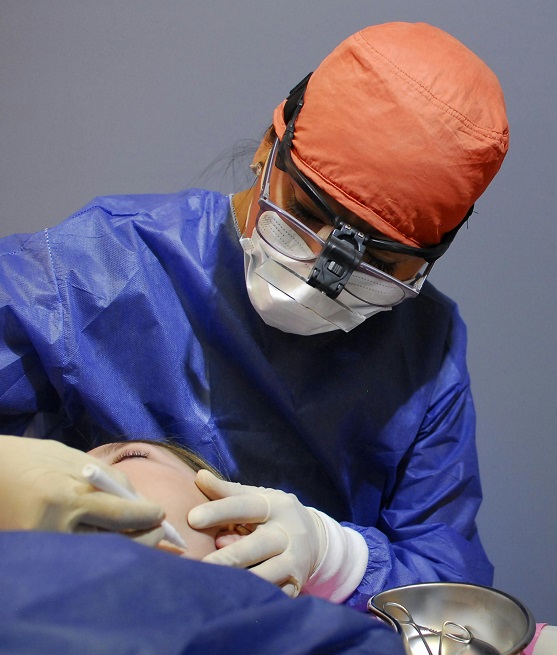Diagnosis and Treatment of Osteoarthritis

Osteoarthritis (OA) is a disorder that involves degradation of one’s joints and primarily impacts the articular cartilage, the protective tissue that covers the ends of bones in their joints.
While it can impact any joint, it most commonly affects the knees, hips, hands, and spine. This condition typically develops gradually over time, with symptoms such as joint pain, stiffness, and decreased range of motion.
Diagnosis and treatment of osteoarthritis involve a multifaceted approach, encompassing clinical evaluation, imaging studies, and a variety of therapeutic interventions.
The diagnosis usually involves a set of comprehensive clinical assessment, imaging studies such as X-rays, and sometimes, laboratory tests to rule out other forms of arthritis.
Treatment strategies for osteoarthritis encompass lifestyle adjustments, including weight management and low-impact exercises, which can alleviate symptoms.
Medications such as NSAIDs and other pain relievers offer relief from pain, while physiotherapy aims to enhance joint function.
Injections provide targeted relief, and in most cases that are severe, surgical options such as joint replacement may be considered.
Ongoing research explores personalized medicine, disease-modifying therapies, and advanced imaging techniques for more effective OA management.
Patient education holds a crucial importance in making individuals empowered to take active participation in their care and make informed decisions for an improved quality of life despite osteoarthritis.
Diagnosis:
1. Clinical Assessment:
- Diagnosis often begins with a thorough clinical assessment. Healthcare professionals evaluate the patient’s medical history, including risk factors such as age, obesity, joint injuries, and family history of OA.
- Symptoms, such as joint pain, stiffness, and functional limitations, are discussed to understand their onset, duration, and impact on daily life.
2. Physical Examination:
- A physical examination is crucial for identifying characteristic signs of osteoarthritis. Joint tenderness, crepitus (a grating sensation during joint movement), and limited range of motion are commonly observed.
- Assessing joint stability, alignment, and the presence of joint effusion provides additional insights.
3. Imaging Studies:
- Radiographic imaging, including X-rays, is a key diagnostic tool. Joint space narrowing, osteophyte formation (bone spurs), and subchondral bone changes are visible on X-rays and help confirm the diagnosis.
- Magnetic Resonance Imaging (MRI) may be employed to assess soft tissues and provide a more detailed view of cartilage, ligaments, and synovium.
4. Laboratory Tests:
- Blood tests are generally not used for diagnosing osteoarthritis, but they can help rule out other forms of arthritis or inflammatory conditions that may present with similar symptoms with the help of the best arthritis doctor in Delhi.
Treatment:
1. Lifestyle Modifications:
- Weight management is crucial as excess weight puts additional stress on weight-bearing joints and can help you in refraining to look out for any knee joint replacement surgeon in Delhi NCR. Lifestyle changes, including a balanced diet and regular exercise, can help manage symptoms and slow down disease progression.
- Physiotherapy programs aim to improve joint function, strengthen muscles, and enhance flexibility.
2. Medications:
- Over-the-counter pain reliever medications and nonsteroidal anti-inflammatory drugs (NSAIDs) help manage pain and inflammation.
- Topical NSAIDs or analgesic creams can be applied directly to the affected joint for localized relief.
3. Joint Injections:
- Corticosteroid injections provide potent anti-inflammatory effects and can offer temporary relief from pain. Hyaluronic acid injections, an option for knee osteoarthritis, aim to improve joint lubrication and reduce friction.
4. Orthotic Devices:
- Assistive devices like braces, canes, or orthopedic shoe inserts may be recommended to provide support, improve stability, and alleviate joint stress.
5. Surgical Interventions:
- In cases of severe joint damage, surgical options may be considered. Arthroscopy can be performed to remove loose cartilage or bone fragments. Joint replacement surgery, such as total knee or hip replacement, is reserved for advanced cases with significant joint deterioration.
6. Regenerative Medicine:
- Emerging treatments include platelet-rich plasma (PRP) injections and stem cell therapy, aiming to promote tissue regeneration and modulate inflammation. While research is ongoing, these therapies show promise in potentially slowing disease progression.
7. Complementary Therapies:
- Acupuncture, massage, and dietary supplements like glucosamine and chondroitin sulfate are among complementary approaches some individuals find beneficial. However, scientific evidence supporting their efficacy is varied.
Challenges and Future Directions:
- Despite advancements in OA management, challenges persist. Tailoring treatment to individual needs remains a complex task, and predicting disease progression is not always straightforward.
- Ongoing research puts all of their focus on apprehending the molecular mechanisms underlying osteoarthritis, with the main motive of forming targeted therapies.
Precision medicine approaches may allow for more personalized treatment strategies based on an individual’s genetic makeup and specific disease characteristics.
- Patient education plays a crucial role in the overall management of osteoarthritis. Empowering individuals with knowledge about their condition and encouraging active participation in their care can enhance treatment outcomes.
Conclusion:
The diagnosis and treatment of osteoarthritis involve a comprehensive and patient-centered approach. Early detection through clinical evaluation and imaging studies allows for timely intervention, and a combination of lifestyle modifications and medications.
In some cases, surgical procedures contribute to managing symptoms and improving the quality of life for individuals with osteoarthritis.
As our understanding of the disease continues to evolve, the future holds promise for more targeted and personalized therapeutic approaches.











